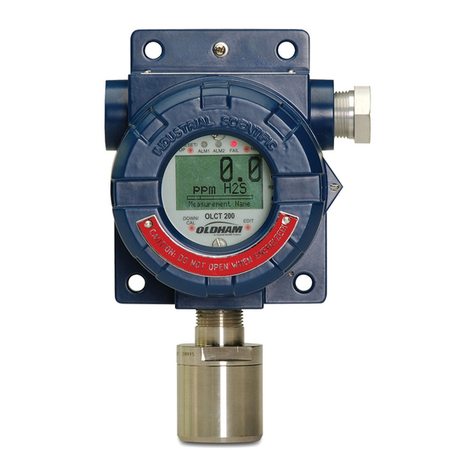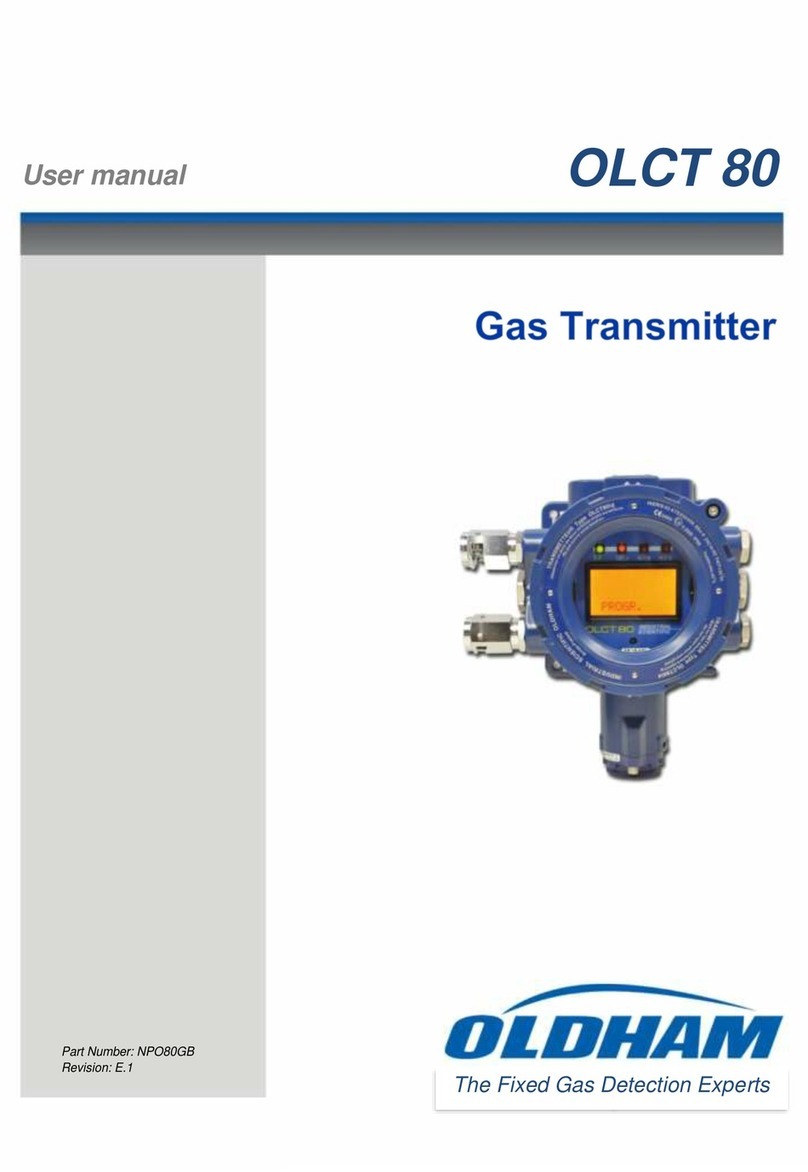3
O
OL
LD
DH
HA
AM
M
S
S.
.A
A.
.
GAS DETECTION
GAS and DUST
EMISSION ANALYSIS
We are delighted that you have chosen an OLDHAM S.A. instrument and would like to thank you for
your choice.
We have taken all the necessary measures to ensure that your instrument provides total
satisfaction in the future.
Now it is important to read this document carefully.
E
EX
XT
TE
EN
NT
T
O
OF
F
R
RE
ES
SP
PO
ON
NS
SI
IB
BI
IL
LI
IT
TY
Y
*OLDHAM S.A. declines its responsibility towards any person for material damage, physical injury or death
resulting wholly or partly from inappropriate use, installation or storage of its equipment resulting from failure
to observe instructions and warnings and/or standards and regulations in force.
*OLDHAM S.A. neither supports nor authorises any company, physical or moral person to assume
responsibility on behalf of OLDHAM S.A., even if it is involved in the sale of OLDHAM S.A. products.
*OLDHAM S.A. cannot be held responsible for direct or indirect damage or be required to pay direct or
indirect compensation resulting from the sale or use of any of its products IF THESE PRODUCTS HAVE
NOT BEEN DEFINED AND CHOSEN BY OLDHAM S.A. FOR THEIR SPECIFIC USE.
C
CL
LA
AU
US
SE
ES
S
C
CO
ON
NC
CE
ER
RN
NI
IN
NG
G
P
PR
RO
OP
PE
ER
RT
TY
Y
*Drawings, plans, specifications and information included in this document contain confidential information
that is the property of OLDHAM S.A.
*None of this information may be reproduced, copied, divulged or translated, by physical, electronic or any
other means, nor used as the basis for the manufacture or sale of OLDHAM S.A. equipment or for any other
reasons without prior consent from OLDHAM S.A.
W
WA
AR
RN
NI
IN
NG
GS
S
*This document is not contractually binding. In the interests of its customers, OLDHAM S.A. reserves to
modify the technical specifications of its equipment without notice, in order to improve its performance.
*READ THIS MANUAL CAREFULLY BEFORE FIRST USE OF THE EQUIPMENT: this manual must be read
by any person who is or will be responsible for using, maintaining or repairing this equipment.
*This equipment will only provide the announced performance levels if it is used, maintained and
repaired according to OLDHAM S.A. directives, by OLDHAM personnel or by personnel approved
by OLDHAM S.A.






























